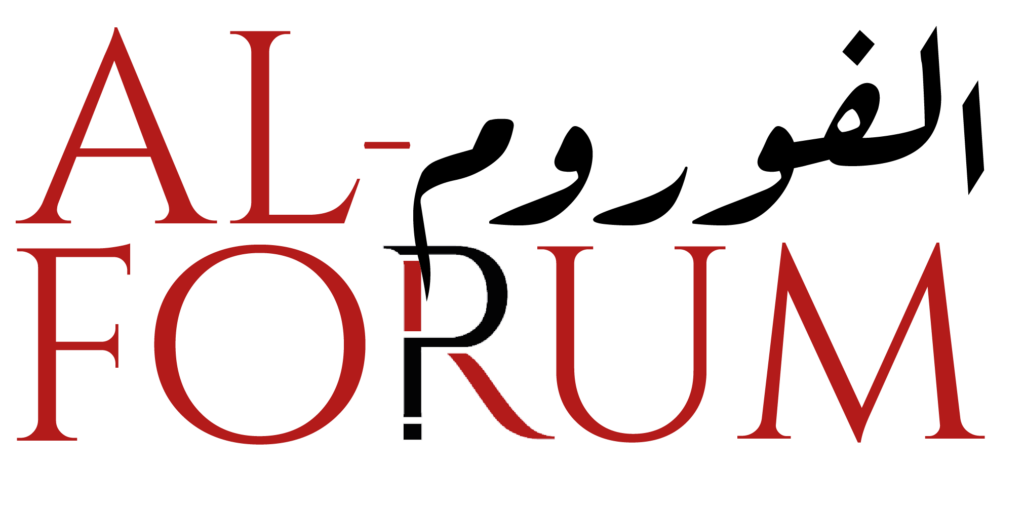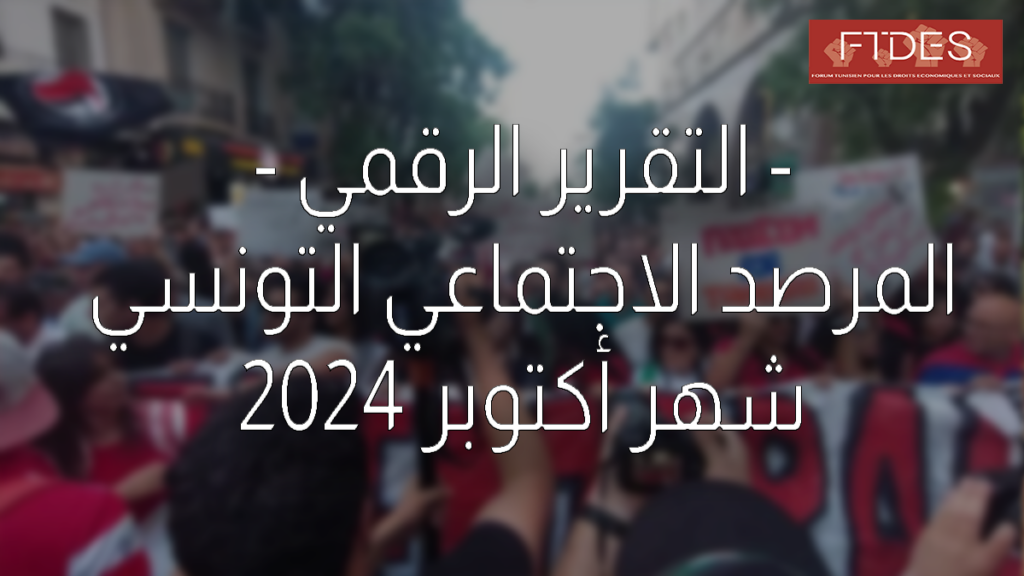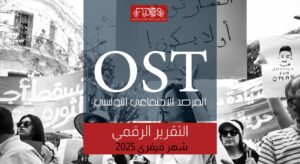October 2024
Professional demands dominate the protest scene
During October 2024, protest movements continued their upward trend, with 83% of them taking an organized form, with a clear return to movements by traditional players such as teachers, supply teachers and construction workers.
Despite the great confidence placed in President Kais Said, which enabled him to renew his mandate, protest action is gradually spreading due to the impact of the economic and social crisis and the promises made before the election campaign.
The month of October saw 300 protest actions, an increase of around 9% on the 273 recorded in September. The demands raised in 125 of these protests, or 41% of the total, mainly concerned labor rights, demands for settlement of professional and social situations, payment of contributions or wages, improvement of working conditions and the right to employment.
Protests by teachers and supply teachers who have not yet been reappointed in accordance with the authorities’ repeated promises continued throughout October. Many regions were the scene of demonstrations by parents and pupils demanding an educational framework, school transport and the construction of buildings for educational institutions, some of which are still under construction a month and a half into the school year.
At the same time, residents carried out several actions throughout October concerning the right to drinking water, connection to the electricity grid, road construction, breaking the isolation of communities, the right to health, the right to security and a safe public space, the right to development, demands for food supplies and control of the cost of living.
The month was also marked by sectoral movements, including individual cab drivers demanding to obtain their driving licenses, lawyers calling for the principles of fair trial to be respected and the judicial system to be improved, and fishermen expressing their indignation and anger at the deteriorating environmental situation and declining level of fish stocks.
As in the previous month, actions on the ground topped the list of protest forms recorded, accounting for over 77% of the total movements observed during the month, divided between 90 protests, 33 sit-ins, 20 red badges, 19 strikes, 19 between discontent and agitation, 11 peaceful marches, 10 protest rallies, 10 business disruptions, 8 road closures, 5 marches to the capital, 4 course impediments, 1 suicide threat and 1 burnt rubber tire. On the other hand, a media appeal was used 41 times, a statement 19 times and distress calls 9 times.
Workers, employees and residents were the driving force behind protests in October, accounting for more than half of all social movements recorded. They were followed by activists, who took part in 38 actions, and then by teachers and professors, who continued the movements begun in September and took part in 27 actions.
Parents carried out 12 actions, students 10 actions and unemployed degree holders and the unemployed 14 actions. Cab drivers carried out 5 actions, farmers 4 actions, journalists, fishermen and health service employees 3 actions each.
Tunis remains at the top of the list of most protesting governorates with 66 actions, followed by Gafsa with 47 actions, Kairouan with 40 actions, Jendouba with 22 actions and Kasserine with 15 actions. As previously reported, the majority of protests are centered on the capital, with most demonstrators using central headquarters such as ministries and sovereign seats as places to express their growing anger at demands most of which can be classified as unresolved.
The media return to first place in the ranking of places and spaces adopted by actors and activists to make their voices heard, express their anger and discontent, or send messages of distress and denunciation. Next come workplaces, roads and schools. For the first time, the phosphate Gafsa company occupied fifth place in the ranking of protest sites.
In October, 268 actions were organized, 29 by men and 3 by women. 83% of actions were organized, while the remaining 17% were spontaneous. 97.33% of actions were organized collectively, while individual actions were limited to 2.67%.
According to the sample observed, the phenomenon of suicide and suicide attempts has begun to decline again. During the month of October, we observed 8 cases of suicide and attempted suicide, divided equally between the governorates of Kairouan, Monastir, Bizerte, Mahdia, Sousse, Sfax, Gabes and Gafsa.
Half of the suicides and attempted suicides were perpetrated by young people, and the other half by adults, including a security guard. Public spaces were the main suicide sites, with 5 cases, followed by residential areas with 3 suicides. In October, 7 men and 1 woman committed suicide. On five occasions, five of the suicides resulted in death, while the others survived.
According to the surveillance sample, the trend towards escalating violence continued during October, and the street remains the most frequent space for assaults and injuries which, in many cases, led to murder, followed by the home, educational establishments, virtual space, transport, prisons and administrations. Some 59% were committed individually, while 40% were committed collectively.
The perpetrators of the violence recorded in October were men in 77.97% of cases observed, and they were victims of violence in 64.41% of cases. More than 16% of violent incidents involved both sexes, while in 3% of cases the perpetrators were women, and in 32% of cases they were victims of the spread of violence. The reasons for the frequency of violent events are due to the spread of a form of dissatisfaction and a desire for aggression, sexual assault, revenge, intimidation and theft. Aggression has included digital space and official virtual space. In recorded cases of violence, various tools such as sharp instruments, knives, stones, as well as forcible assaults and beatings were used.







